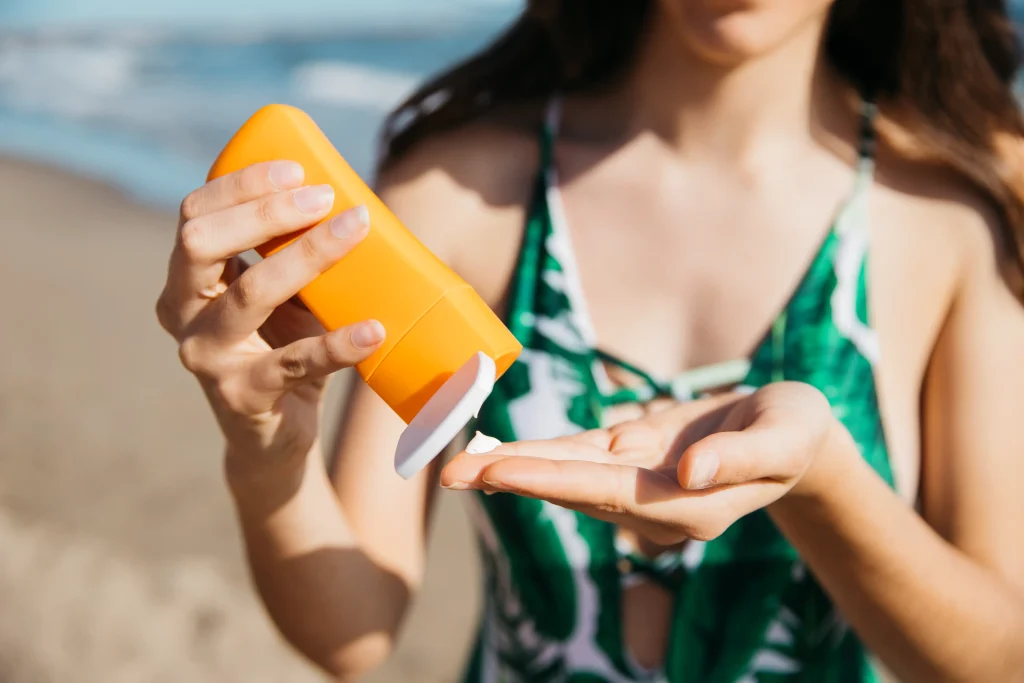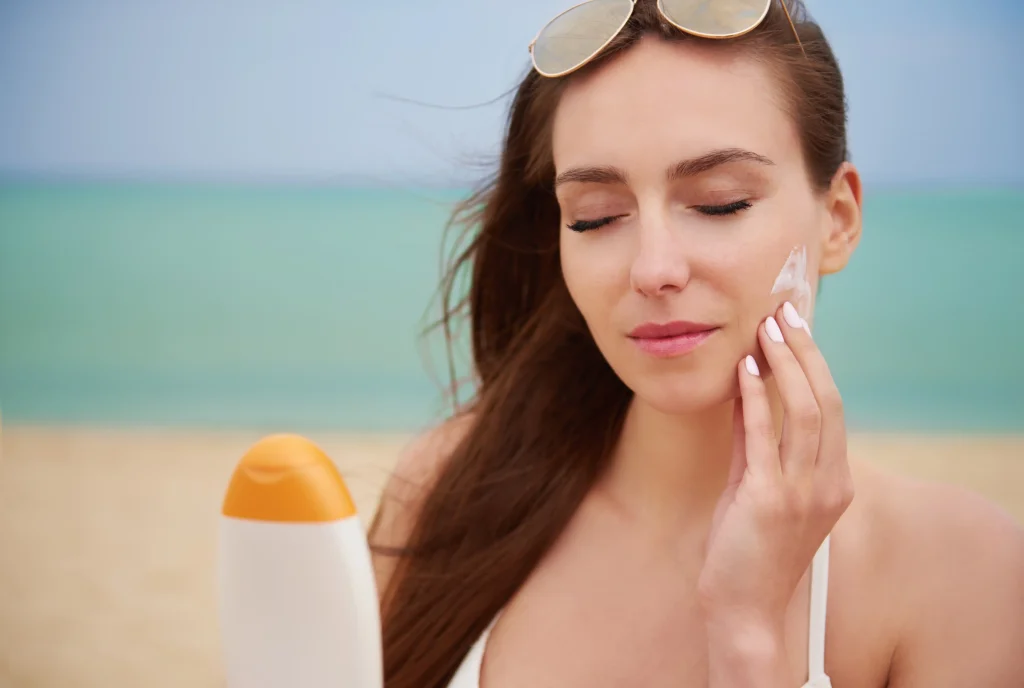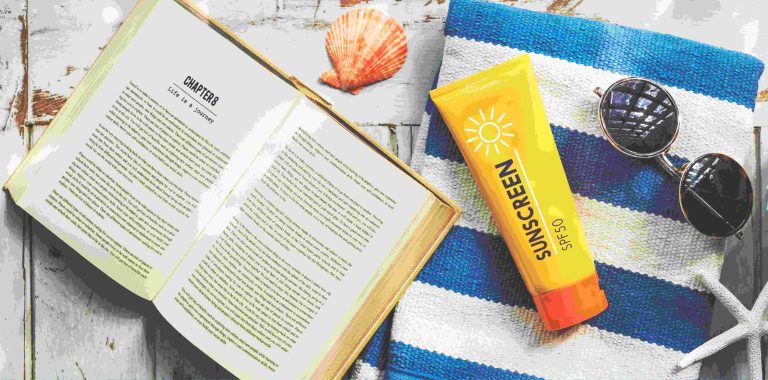산화 아연 선스크린은 약간 무거운 느낌을 가질 수 있으며, 그것들을 아아산화하는 것이 더 어려울 수 있습니다. 그러나 그 두께는 강한 방패를 만듭니다.이산화 티타특특히 작은 입자를 가진 이산화 티타이이이티이이이산화 티타이이이이이이이산화 티타특히 이이이이산화 티타이이이이빠르고 쉬운 응용 프로그램을 선호하십니까?티타티탄은 당신의 선택이 될 수 있습니다.강한 장벽을 원하십니까?아연은 당신을 얻었습니다. 향수는 선 스크린 냄새를냅니다.BFP: 선스크린 성분의 신뢰할 수 있는 공급자 https://www.shbfpl.com/pt/noticias/compartilhamento-de-conhecimento-da-industria/what-percentage-of-titanium-dioxide-and-zinc-are-most-effective-in-mineral-sunscreens/ 우리는 전 세계의 선스크린 제조업체에 최고 수준의 이산화 티타늄과 산화 아연을 공급하는 데 열정적입니다.20 년 이상 게임에서, 우리는 모두 품질, 신뢰, 신선한 아이디어에 관한 것입니다.

고품질 이산화 티타늄 및 산화 아연 제품 공급 전문 향수는 선 스크린 냄새를냅니다. 이산화 티타늄 BFP-T10AHL과 산화 아연 BFP-Z40S와 같은 우리의 제품은 멋진 UV 보호와 쉬운 혼합을 위해 만들어졌습니다.그들은 당신이 민감한 피부를 위해 또는 일상 사용을위한 공예를 만든지 여부, 당신의 선스크린을 뛰어나게 만듭니다. BFP Z40S 분말 산화 아연 품질 표준과 지속가능성에 대한 약속
품질은 우리의 일입니다.우리는 모든 배치가 순수하고 훌륭한 성능을 보장하기 위해 엄격한 검사를 실행합니다.우리는 또한 환경에 대해 신경 쓰고, 우리의 발자국을 작게 유지하기 위해 책임감 있는 재료 소스를 제공합니다.선스크린 라인을 어떻게 도울 수 있는지 궁금하십니까?
5. 쌀 가루 : 가벼운 질감 발견하기 위해. https://www.shbfpl.com/pt/noticias/compartilhamento-de-conhecimento-da-industria/what-percentage-of-titanium-dioxide-and-zinc-are-most-effective-in-mineral-sunscreens/ 결론: 당신의 필요에 따라 올바른 선스크린을 선택 향수는 선 스크린 냄새를냅니다. 이산화 티타늄이나 산화 아연?그것은 당신에게 달려 있습니다.단단한 UVB 보호를 가진 빛을 원한다면 이산화 티타고고티고고는 당신의 일치입니다.민감한 피부가 있거나 완전한 UVA 보호가 필요합니까?아연 산화물은 가는 길입니다.많은 선스크린은 두 세계의 최고를 위해 모두 혼합합니다.BFP에서는 프리미엄 재료로 놀라운 제품을 만들 수 있도록 도와주기 위해 여기에 있습니다.
Q1 미네럴 기반 선스크린을 사용하는 주요 이점은 무엇입니까?
- A1 이산화 티타늄이나 산화 아연이 있는 미네럴 선스크린은 피부에 침몰하지 않고 UV 선을 차단합니다.이것은 자극을 줄이고 민감한 사람들에게 완벽하게 만듭니다.또한 환경에 더 친절하고 적용할 때 보호하기 시작합니다 - 기다리는 필요가 없습니다.Q2 이산화 티타늄과 산화 아연을 단일 선스크린에 결합할 수 있습니까?
- https://www.shbfpl.com/fr/produit/oxyde-de-zinc-bfp-z40sm/feed/A2 완전히!그들을 혼합하는 것은 최고의 선스크린을 위한 똑똑한 움직임입니다.이산화 티타늄은 UVB 선을 이이이산화 아연은 UVA를 처리하는 반면, 이이이산화 티타이이이타이이이이이이산화 티타이이이이산화 이산화 티타늄은 UVB함께, 그들은 당신에게 완전한 커버지를 제공합니다.우리의 이산화 티타늄 BFP-T10AHS와 산화 아연 BFP-Z40S는 부드럽게 함께 작동하도록 만들어집니다.
- Q3 이 선스크린은 일상 사용에 안전합니까?A3 예, 매일 안전합니다!FDA는 이산화 티타늄과 산화 아연이 부드럽고 효과적이라고 말합니다.그들은 자극하지 않으므로 어린이, 성인 또는 민감한 피부를 가진 사람에게 좋습니다.안정적인 보호를 위해 정기적으로 사용하십시오.
이산화 티타늄과 산화 아연 선스크린 사이의 주요 차이점을 발견하십시오.UV 보호, 피부 호환성 및 환경 영향에 대해 알아보고 귀하의 요구에 가장 적합한 옵션을 선택하십시오.BFP의 고품질 재료를 탐험하십시오. https://www.shbfpl.com/pt/noticias/compartilhamento-de-conhecimento-da-industria/what-percentage-of-titanium-dioxide-and-zinc-are-most-effective-in-mineral-sunscreens/이산화 티타늄 선스크린 vs 산화 아연 : 알아야 할 주요 차이점 - BFP
2025-06-06 – BFP
https://www.shbfpl.com/it/notizia/conoscenza-delle-conoscenze-del-settore/i-migliori-ingredienti-da-abbinare-allossido-di-zinco-nelle-polveri-della-crema-solare/ https://www.shbfpl.com/pt/noticias/compartilhamento-de-conhecimento-da-industria/what-percentage-of-titanium-dioxide-and-zinc-are-most-effective-in-mineral-sunscreens/ 태양이당신은 당신의 선스크린을 잡고, 그러나 당신은 일시 중지 - 이산화 티타늄 또는 산화 아연?어떤 것이 피부에 더 좋습니까?둘 다 미네럴 선스크린의 별이며 UV 선에 대한 안전성과 힘으로 알려져 있습니다.하지만 그들은 같지 않습니다.BFP에서 우리는 전문가입니다 […]
이산화티타늄 선스크린은 부드러운 피부를 UV선으로부터 안전하게 유지하기 위한 슈퍼 선택입니다.그것의 친절하고 견고한 커버는 모든 피부 유형, 특히 빨간 빨간 또는 아프는 피부를 도와줍니다.이 가이드는 이산화 티타늄이 어떻게 작동하는지, 왜 부드러운 피부에 좋은지, 그리고 상하이 BFP가 이이이산화 티타이 이 이산화 티타이 이 이 이 이 이산화 티타이 이 이 선스크린에 대해 멋진 이산화무엇 […]
https://www.shbfpl.com/ko//-/-/ 향수는 선 스크린 냄새를냅니다. 선스크린은 매우 중요합니다.피부암을 막는 데 도움이 됩니다.또한 피부를 유해한 자외선 (UV) 선으로부터 보호합니다.선스크린은 방패처럼 작동합니다.그것은 태양의 나쁜 영향으로부터 피부를 안전하게 유지합니다.이 큰 작업은 우리가 왜 태양 보호제에 대한 새로운 아이디어가 필요한지 보여줍니다.이러한 아이디어는 모든 사람들에게 최고의 보호를 제공해야합니다 […]
목, 05 6월 2025 08:59:07 0000
https://www.shbfpl.com/fr/nouvelles/partage-des-connaissances-de-lindustrie/titanium-dioxide-sunscreen-vs-zinc-oxide-key-differences-to-know/ 향수는 선 스크린 냄새를냅니다. https://www.shbfpl.com/fr/nouvelles/partage-des-connaissances-de-lindustrie/titanium-dioxide-sunscreen-vs-zinc-oxide-key-differences-to-know/#respond
| : 피부에 더 깊이 뚫어 노화되고 지속적인 피해를 입 힙니다. | 금, 06 6월 2025 03:50:11 0000 | https://www.shbfpl.com/?p=3151 |
| Kommentare zu: 이산화 티타늄 선스크린은 광범위 한 스스스스코코코멘트가 될 수 있습니까? | https://www.shbfpl.com/fr/nouvelles/partage-des-connaissances-de-lindustrie/titanium-dioxide-sunscreen-vs-zinc-oxide-key-differences-to-know/feed/ | https://www.shbfpl.com/fr/nouvelles/partage-des-connaissances-de-lindustrie/how-titanium-dioxide-protects-sensitive-skin-from-harmful-uv-rays/ |
| https://www.shbfpl.com/fr/nouvelles/partage-des-connaissances-de-lindustrie/how-titanium-dioxide-protects-sensitive-skin-from-harmful-uv-rays/#respond | 목, 05 6월 2025 03:50:58 0000 | https://www.shbfpl.com/?p=3143 |
| Tue, 2025 년 3 월 25 일 03:50:21 +0000 | https://www.shbfpl.com/fr/nouvelles/partage-des-connaissances-de-lindustrie/how-titanium-dioxide-protects-sensitive-skin-from-harmful-uv-rays/feed/ | https://www.shbfpl.com/fr/nouvelles/partage-des-connaissances-de-lindustrie/how-titanium-dioxide-protects-sensitive-skin-from-harmful-uv-rays/feed/ |
| https://www.shbfpl.com/fr/nouvelles/partage-des-connaissances-de-lindustrie/why-bemotrizinol-is-the-ultimate-uv-filter-for-broad-spectrum-sunscreen-protection/ | https://www.shbfpl.com/fr/nouvelles/partage-des-connaissances-de-lindustrie/why-bemotrizinol-is-the-ultimate-uv-filter-for-broad-spectrum-sunscreen-protection/#respond | 화요일, 03 6월 2025 03:50:13 0000 |
| https://www.shbfpl.com/?p=3139 | https://www.shbfpl.com/fr/nouvelles/partage-des-connaissances-de-lindustrie/why-bemotrizinol-is-the-ultimate-uv-filter-for-broad-spectrum-sunscreen-protection/feed/ | 선스크린은 매우 중요합니다.피부암을 막는 데 도움이 됩니다.또한 피부를 유해한 자외선 (UV) 선으로부터 보호합니다.선스크린은 방패처럼 작동합니다.그것은 태양의 나쁜 영향으로부터 피부를 안전하게 유지합니다.이 큰 작업은 우리가 왜 태양 보호제에 대한 새로운 아이디어가 필요한지 보여줍니다.이러한 아이디어는 모든 사람들에게 최고의 보호를 제공해야합니다 […] |
xiufentaiadmin- BFP - 페이지 5
xiufentaiadmin- BFP - 페이지 5 https://www.shbfpl.com/pt/noticias/compartilhamento-de-conhecimento-da-industria/what-percentage-of-titanium-dioxide-and-zinc-are-most-effective-in-mineral-sunscreens/xiufentaiadmin- BFP - 트랑 5
xiufentaiadmin- BFP - 페이지 5
태양이당신은 당신의 선스크린을 잡고, 그러나 당신은 일시 중지 - 이산화 티타늄 또는 산화 아연?어떤 것이 피부에 더 좋습니까?둘 다 미네럴 선스크린의 별이며 UV 선에 대한 안전성과 힘으로 알려져 있습니다.하지만 그들은 같지 않습니다.BFP에서 우리는 전문가입니다 […]이산화티타늄 선스크린은 부드러운 피부를 UV선으로부터 안전하게 유지하기 위한 슈퍼 선택입니다.그것의 친절하고 견고한 커버는 모든 피부 유형, 특히 빨간 빨간 또는 아프는 피부를 도와줍니다.이 가이드는 이산화 티타늄이 어떻게 작동하는지, 왜 부드러운 피부에 좋은지, 그리고 상하이 BFP가 이이이산화 티타이 이 이산화 티타이 이 이 이 이 이산화 티타이 이 이 선스크린에 대해 멋진 이산화무엇이 이산화 티타늄을 UV 선에 대해 효과적으로 만든가?이산화티타이이이이이산화 티타이이이이이이산화 티타이이이산화 티타이이이타이이이산화 티타이이이탄은 이산이산화 티나쁜 UV 선을 차단하는 것으로 유명합니다.그것의 멋진 특징은 완전한 보호를 위한 신뢰할 수 있는 선택입니다.피부를 UVA 및 UVB 광선에서 안전하게 유지합니다.이산화티탄의 UV 보호 뒤에 과학 이산화티탄은 커버를 만듭니다 […] 향수는 선 스크린 냄새를냅니다. 이산화티타늄 선스크린은 부드러운 피부를 UV선으로부터 안전하게 유지하기 위한 슈퍼 선택입니다.그것의 친절하고 견고한 커버는 모든 피부 유형, 특히 빨간 빨간 또는 아프는 피부를 도와줍니다.이 가이드는 이산화 티타늄이 어떻게 작동하는지, 왜 부드러운 피부에 좋은지, 그리고 상하이 BFP가 이이이산화 티타이 이 이산화 티타이 이 이 이 이 이산화 티타이 이 이 선스크린에 대해 멋진 이산화무엇 […]

태양이당신은 당신의 선스크린을 잡고, 그러나 당신은 일시 중지 - 이산화 티타늄 또는 산화 아연?어떤 것이 피부에 더 좋습니까?둘 다 미네럴 선스크린의 별이며 UV 선에 대한 안전성과 힘으로 알려져 있습니다.하지만 그들은 같지 않습니다.BFP에서는 선스크린 제조업체를 위한 최고 품질의 이산화 티타늄과 산화 아연을 공급하는 전문가입니다.그들을 구별하는 것을 살펴보자, 그래서 당신에게 적합한 것을 선택할 수 있습니다.이산화티타늄 선스크린의 구성과 특징 선스크린이 UV 선을 어떻게 유지하는지 궁금해했습니까?이산화 티타늄은 거울처럼 피부에 앉아 그 광선을 반영합니다 […]
태양이당신은 당신의 선스크린을 잡고, 그러나 당신은 일시 중지 - 이산화 티타늄 또는 산화 아연?어떤 것이 피부에 더 좋습니까?둘 다 미네럴 선스크린의 별이며 UV 선에 대한 안전성과 힘으로 알려져 있습니다.하지만 그들은 같지 않습니다.BFP에서 우리는 전문가입니다 […]xiufentaiadmin- BFP - 페이지 5 향수는 선 스크린 냄새를냅니다. "이산화 티타늄 선스크린 vs. 산화 아연: 알아야 할 주요 차이점" - BFP 이산화 티타늄은 어떻게 민감한 피부를 유해한 UV 선으로부터 보호합니까? – BFP “왜 Bemotrizinol은 광범위한 선스크린 보호를 위한 궁극적인 UV 필터입니다” - BFP 향수는 선 스크린 냄새를냅니다. 왜 Bemotrizinol은 광범위한 선스크린 보호를 위한 궁극적인 UV 필터입니다. BFP
「UV-312/BFP-UV 312」 — BFP
태양이당신은 당신의 선스크린을 잡고, 그러나 당신은 일시 중지 - 이산화 티타늄 또는 산화 아연?어떤 것이 피부에 더 좋습니까?둘 다 미네럴 선스크린의 별이며 UV 선에 대한 안전성과 힘으로 알려져 있습니다.하지만 그들은 같지 않습니다.BFP에서 우리는 전문가입니다 […] 왜 Bemotrizinol은 광범위한 선스크린 보호를 위한 궁극적인 UV 필터입니다 BFP 5. 쌀 가루 : 가벼운 질감 이산화티타늄 선스크린은 부드러운 피부를 UV선으로부터 안전하게 유지하기 위한 슈퍼 선택입니다.그것의 친절하고 견고한 커버는 모든 피부 유형, 특히 빨간 빨간 또는 아프는 피부를 도와줍니다.이 가이드는 이산화 티타늄이 어떻게 작동하는지, 왜 부드러운 피부에 좋은지, 그리고 상하이 BFP가 이이이산화 티타이 이 이산화 티타이 이 이 이 이 이산화 티타이 이 이 선스크린에 대해 멋진 이산화무엇 …
이산화티타늄은 어떻게 민감한 피부를 유해한 UV 선으로부터 보호합니까? – BFP는
태양이당신은 당신의 선스크린을 잡고, 그러나 당신은 일시 중지 - 이산화 티타늄 또는 산화 아연?어떤 것이 피부에 더 좋습니까?둘 다 미네럴 선스크린의 별이며 UV 선에 대한 안전성과 힘으로 알려져 있습니다.하지만 그들은 같지 않습니다.BFP에서 우리는 전문가입니다 […]태양이당신은 당신의 선스크린을 잡고, 그러나 당신은 일시 중지 - 이산화 티타늄 또는 산화 아연?어떤 것이 피부에 더 좋습니까?둘 다 미네럴 선스크린의 별이며 UV 선에 대한 안전성과 힘으로 알려져 있습니다.하지만 그들은 같지 않습니다.BFP에서, 우리는 전문가입니다 … https://www.shbfpl.com/pt/noticias/compartilhamento-de-conhecimento-da-industria/what-percentage-of-titanium-dioxide-and-zinc-are-most-effective-in-mineral-sunscreens/ 이산화 티타늄 선스크린 vs. 산화 아연: 알아야 할 주요 차이점 - BFP 향수는 선 스크린 냄새를냅니다. 선스크린은 매우 중요합니다.피부암을 막는 데 도움이 됩니다.또한 피부를 유해한 자외선 (UV) 선으로부터 보호합니다.선스크린은 방패처럼 작동합니다.그것은 태양의 나쁜 영향으로부터 피부를 안전하게 유지합니다.이 큰 작업은 우리가 왜 태양 보호제에 대한 새로운 아이디어가 필요한지 보여줍니다.이러한 아이디어는 모든 사람들에게 최고의 보호를 제공해야합니다 …
왜 Bemotrizinol은 광범위한 선스크린 보호를 위한 궁극적인 UV 필터입니다 - BFP
«왜 Bemotrizinol은 광범위한 선스크린 보호를 위한 궁극적인 UV 필터입니다» - BFP https://www.shbfpl.com/pt/noticias/compartilhamento-de-conhecimento-da-industria/what-percentage-of-titanium-dioxide-and-zinc-are-most-effective-in-mineral-sunscreens/ 태양이당신은 당신의 선스크린을 잡고, 그러나 당신은 일시 중지 - 이산화 티타늄 또는 산화 아연?어떤 것이 피부에 더 좋습니까?둘 다 미네럴 선스크린의 별이며 UV 선에 대한 안전성과 힘으로 알려져 있습니다.하지만 그들은 같지 않습니다.BFP에서는 선스크린 제조업체를 위한 최고 품질의 이산화 티타늄과 산화 아연을 공급하는 전문가입니다.그들을 구별하는 것을 살펴보자, 그래서 당신에게 적합한 것을 선택할 수 있습니다.이산화티타늄 선스크린의 구성과 특징 선스크린이 UV 선을 어떻게 유지하는지 궁금해했습니까?이산화 티타늄은 거울처럼 피부에 앉아 있으며, 그 광선을 반영합니다.
- : 매끄러운 마감을 위해 메이크업 위에 추가하십시오.이산화티타늄 선스크린은 부드러운 피부를 UV선으로부터 안전하게 유지하기 위한 슈퍼 선택입니다.그것의 친절하고 견고한 커버는 모든 피부 유형, 특히 빨간 빨간 또는 아프는 피부를 도와줍니다.이 가이드는 이산화 티타늄이 어떻게 작동하는지, 왜 부드러운 피부에 좋은지, 그리고 상하이 BFP가 이이이산화 티타이 이 이산화 티타이 이 이 이 이 이산화 티타이 이 이 선스크린에 대해 멋진 이산화무엇이 이산화 티타늄을 UV 선에 대해 효과적으로 만든가?이산화티타이이이이이산화 티타이이이이이이산화 티타이이이산화 티타이이이타이이이산화 티타이이이탄은 이산이산화 티나쁜 UV 선을 차단하는 것으로 유명합니다.그것의 멋진 특징은 완전한 보호를 위한 신뢰할 수 있는 선택입니다.피부를 UVA 및 UVB 광선에서 안전하게 유지합니다.이산화티탄의 UV 보호 뒤에 과학 이산화티탄은 커버 …를 만듭니다. 향수는 선 스크린 냄새를냅니다.https://www.shbfpl.com/ar//---/titanium-dioxide-sunscreen-vs-zinc-oxide-key-differences-to-know/
- https://www.shbfpl.com/ar//---/titanium-dioxide-sunscreen-vs-zinc-oxide-key-differences-to-know/#respondhttps://www.shbfpl.com/ar//---/titanium-dioxide-sunscreen-vs-zinc-oxide-key-differences-to-know/feed/ 향수는 선 스크린 냄새를냅니다.https://www.shbfpl.com/ar//---/how-titanium-dioxide-protects-sensitive-skin-from-harmful-uv-rays/
- https://www.shbfpl.com/ar//---/how-titanium-dioxide-protects-sensitive-skin-from-harmful-uv-rays/#respondhttps://www.shbfpl.com/ar//---/how-titanium-dioxide-protects-sensitive-skin-from-harmful-uv-rays/feed/ 향수는 선 스크린 냄새를냅니다.https://www.shbfpl.com/ar//---/why-bemotrizinol-is-the-ultimate-uv-filter-for-broad-spectrum-sunscreen-protection/
https://www.shbfpl.com/ar//---/why-bemotrizinol-is-the-ultimate-uv-filter-for-broad-spectrum-sunscreen-protection/#respond 향수는 선 스크린 냄새를냅니다. https://www.shbfpl.com/ar//---/why-bemotrizinol-is-the-ultimate-uv-filter-for-broad-spectrum-sunscreen-protection/feed/
이산화티타늄 선스크린은 안전합니까?신화 vs 과학적 사실
이산화티타늄 선스크린의 환경 영향 : 알아야 할 것 여자 해변 선크림 향수는 선 스크린 냄새를냅니다. 환경에 대한 더 많은 관심 산화 아연 vs. 이산화 티타늄: 어느 것이 더 좋습니까?여자-진행-gua-sha-얼굴-절차 향수는 선 스크린 냄새를냅니다. 오늘날 사람들은 환경에 더 관심이 있습니다.많은 사람들이 태양 보호제 성분이 해양 생명에 어떻게 영향을 미치는지에 대해 걱정합니다.
https://www.shbfpl.com/pt/produto/oxido-de-zinco-bfp-z40sm/
물리적 UV 가드로 번성하는 섬세하고 창백한 가루입니다.1인기있는 미네럴 선스크린 성분은 종종 화학 옵션보다 안전하다고 불립니다.그것은 정말로
제품 기능 :산호礁에 대한 안전 향수는 선 스크린 냄새를냅니다. 이 기사는 설명합니다:
물리적 UV 가드로 번성하는 섬세하고 창백한 가루입니다.2이산화티타늄이 해양 환경을 변화시키는 방법
제품 기능 :만약 그것이 진정으로 산호礁을 보호한다면 https://www.shbfpl.com/ko/product/-----bfp-tdo02/feed/ 어떻게
물리적 UV 가드로 번성하는 섬세하고 창백한 가루입니다.3BFP’s
제품 기능 :지구 친화적 인 생산은 해를 줄입니다. 향수는 선 스크린 냄새를냅니다. 이산화티타늄 선스크린은 바다 생물에 나쁜가요?
물리적 UV 가드로 번성하는 섬세하고 창백한 가루입니다.4화학적 선스크린 성분과 달리
제품 기능 :oxybenzone 및 octinoxate 향수는 선 스크린 냄새를냅니다. (산호를 해치기 때문에 하와이에서 금지되었습니다),
피부에 남아 있습니다.그것은 태양 광선을 차단하는 대신 흡수합니다. 그러나, 그것은 어떤 방식으로 바다 생물에 영향을 미칠 수 있습니다.
https://www.shbfpl.com/ko/product/-----bfp-tdo02/feed/ 물에 있는 이산화 티타물에 대한 주요 걱정

